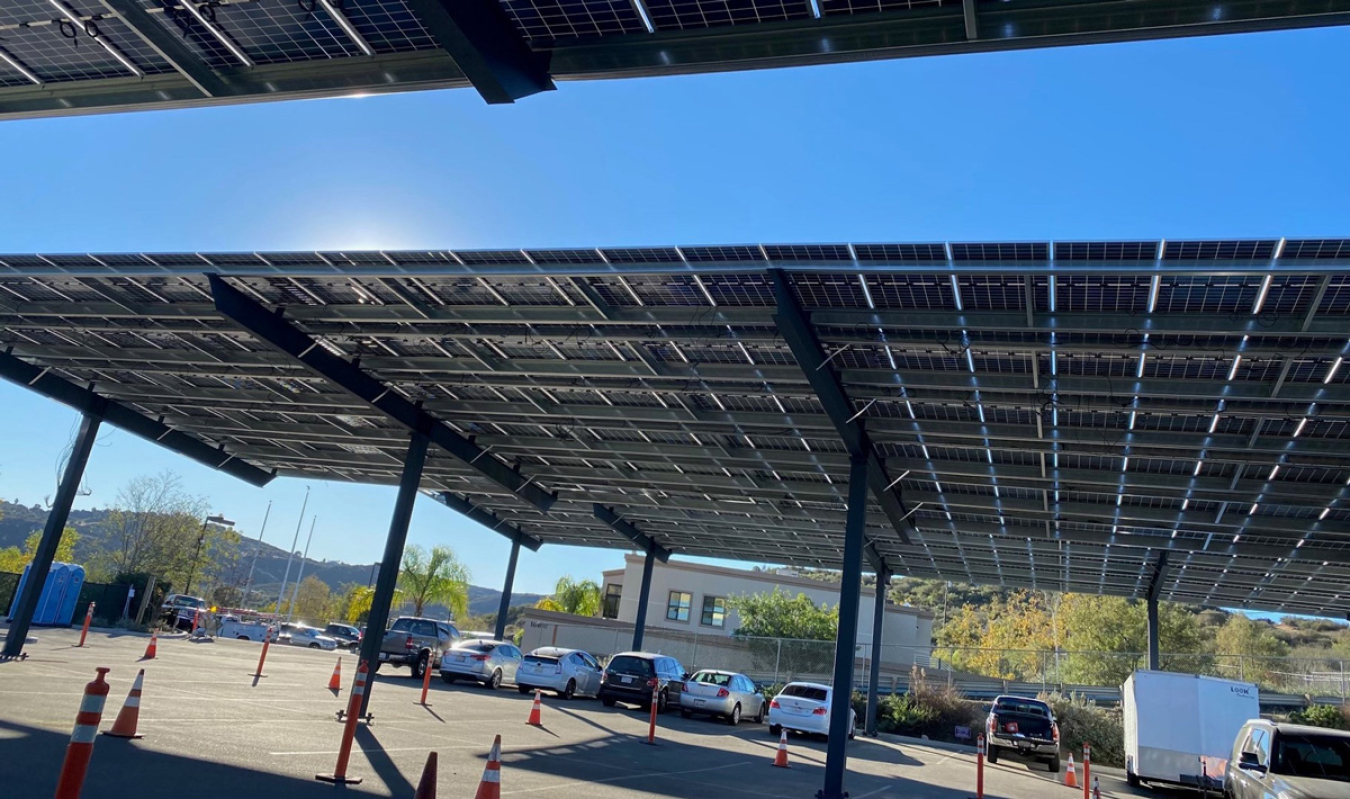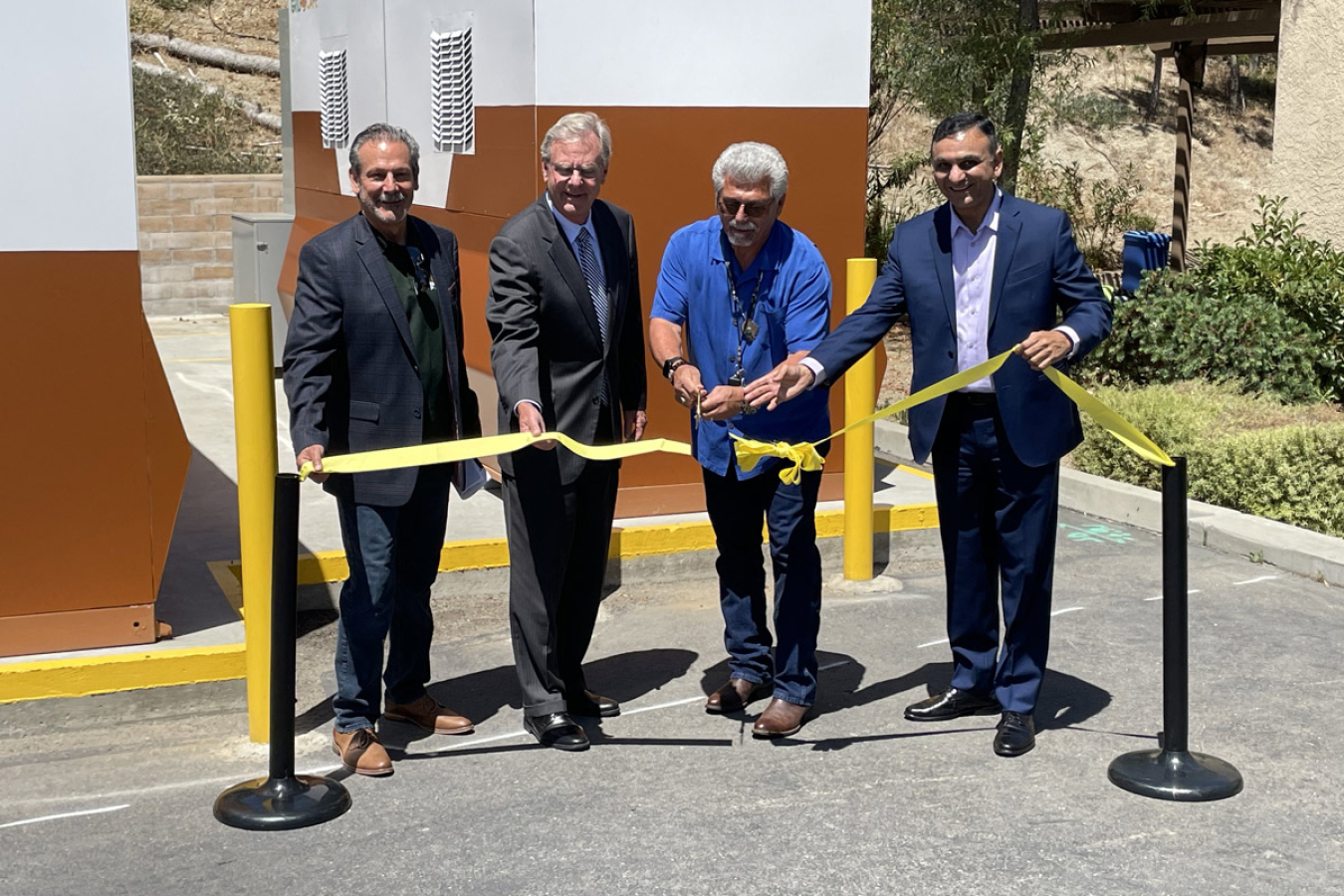Tribe Relies on 21st Century Solution To Combat Climate Threats, Support Resilient Community Services and Operations
Hear from John Flores with the San Pasqual Band of Mission Indians on the Tribe's microgrid project. View text version of video.
Nestled within a rolling mountainous landscape roughly 50 miles from the Pacific coastline in northern San Diego County, the arid valleys of the San Pasqual Reservation bask in abundant sunshine throughout the year.
Taking advantage of this area’s abundant natural resources, the San Pasqual Band of Mission Indians has followed an environmentally conscious approach of working with the land and the climate to support community energy sovereignty and security.
“As a Tribe, we want to be energy independent. That means tapping into our natural resources—not oil or coal—but the sunlight,” explained John Flores, Environmental Director and Water Manager for San Pasqual.
In June 2022, the Tribe commissioned a hybrid solar-storage-liquid propane microgrid system to boost energy reliability and resilience on the Reservation. Designed to maintain critical building operations during emergency events, the microgrid will help maintain uninterrupted power supply to five essential tribal government facilities, including the administrative building, housing and security facilities, fire department, the education and preschool buildings (which also serve as the local emergency shelters), and the wastewater treatment plant.
Microgrids: A 21st Century Solution to 21st Century Problems
Securing a reliable source of power when the larger grid is threatened has become essential for communities in this part of California. Effects from climate change have revealed increased risk and vulnerability to the local energy system.

Satellite image of the 2003 wildfires in southern California that spurred San Pasqual's journey toward energy resilience. Image by NASA/Goddard Space Flight Center Scientific Visualization Studio.
“Because we are in a rural part of [San Diego] county, resiliency is key,” explains Flores. “Everyone has heard about the terrible wildfires in California, [our area] is no exception.”
In 2003, San Pasqual was severely impacted by the Paradise/Cedar Fire. Flames scorched more than 90% of the Reservation, destroying homes and buildings, and resulting in significant loss of power and essential services to the community.
Worsened by climate change, the area is faced with a series of changing conditions that exacerbate the risk of wildfire activity, including rising temperatures and worsening drought which dries out local vegetation.
In addition to wildfires, the Reservation contends with other natural and human-caused threats to its power supply, including extreme heat, high winds, earthquakes, and public safety power shutoffs by the local utility—a practice that has been adopted by power suppliers statewide to help prevent potential wildfires.
Since 2015, San Pasqual has undertaken a series of strategic energy planning steps—including establishing a Tribal Energy and Resiliency Plan—and analyzed several options for achieving the Tribe’s energy and resilience objectives.

This microgrid is one piece of the puzzle, offering an economically and logistically viable option for energy resilience and easily edging out more common backup power options, such as a diesel generator. Flores calls the microgrid a modern solution to today’s energy challenges.
“We have 21st-century problems like wildfires and climate change ... Why would we use a 20th-century technology [diesel generators] to meet 21st-century problems?” Flores asked.
Along with substantially reducing long-duration disruptions to essential tribal services due to grid outages, the microgrid is expected to offer numerous benefits to the Tribe, including producing approximately 6.5 gigawatt-hours of renewable electricity and lowering energy costs by approximately $1.13 million over the system’s lifetime. The project received full permission to operate at full potential in August 2022.
Keep Your Eye on the Prize
Co-funded by the U.S. Department of Energy (DOE) under a 2018 funding opportunity, the microgrid project is one of three San Pasqual projects competitively selected for DOE Office of Indian Energy grants since 2016, including a community-scale solar photovoltaic (PV) project and installing 40 grid-tied solar electric systems for low-income families.
Flores said the Office of Indian Energy has been a valuable partner in advancing the Tribe’s energy resilience goals. The microgrid project also serves as a replicable model for addressing the energy challenges many tribes face as climate change poses growing threats to the security and reliability of their power supply.
“If we all just put our own little piece of the puzzle in, we can solve this problem together. No one is going to have all the answers to complete the puzzle on their own. It’s truly something we all have to do together,” Flores said. “Keep your eye on the prize, which is keeping the power on.”


